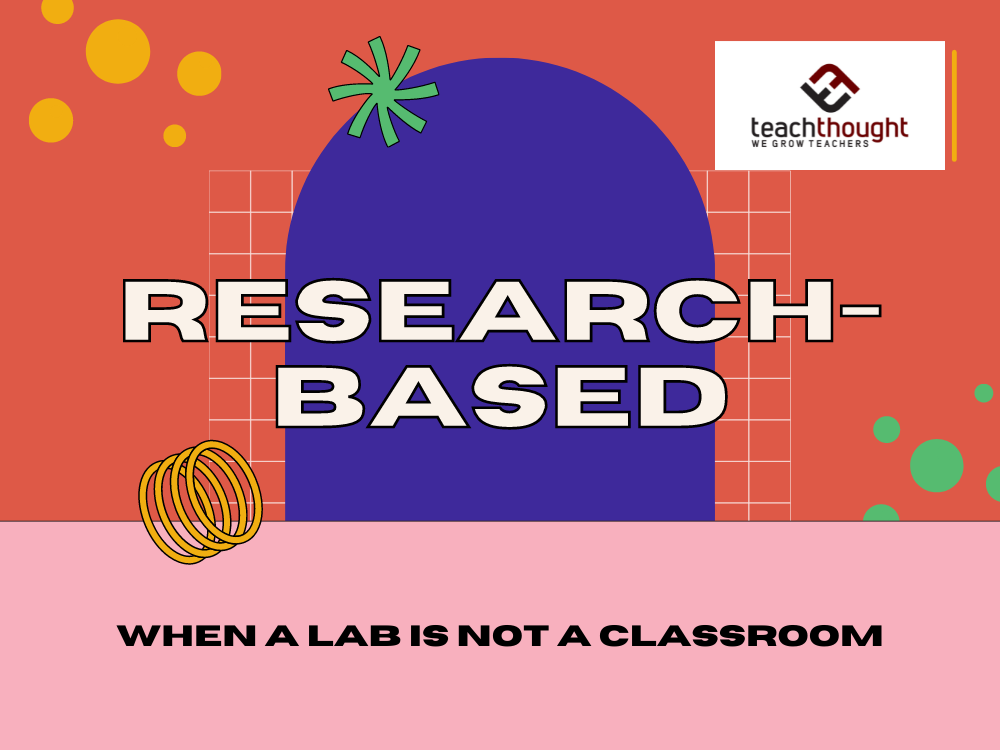
When A Lab Is Not A Classroom
contributed by Judy Willis M.D., M.Ed., radteach.com
Neuroscience research about the learning brain has guided the development of powerful, individualized learning tools.
The challenge lies in selecting the best edtech tools when commercial interests use invalid scientific claims to support their products. My previous blog addressed the available ‘consumer report’ sources to guide you to effective edtech tools. Since there are many products not yet evaluated, this post is intended to offer thinking to help recognize deceitful claims and unreliable experts.
As an educator, you can be alert for several tip-offs to probable false claims or false ‘authorities.’ Three of the more common examples of misleading neuroscience research of edtech products are summarized below.
A Lab Is Not A Classroom
This is one of the more pervasive fallacies–of logic and marketing. As with teaching and learning, transfer is everything.
If promoters claim that the product or program is ‘proven by brain research,’ their assertions are simply not true. Laboratory neuroscience research cannot be proof of what will happen in a classroom or with any one student. Lab research can only be suggestive beyond the lab, as lab research is done in very controlled conditions with only one changing variable. The outcomes of these controlled lab studies cannot promise the same outcome outside the lab walls.
The variables in the real world, such as student age, socioeconomics, class size, time of day, background knowledge, years of teaching experience, and so on, are not evaluated in the lab. Lab research, therefore, reports results in the very controlled subject group and testing system. These results can be very useful in guiding strategies and products designed to produce similar benefits as found in the lab research, but those results cannot be promised.
Valid claims do not state that the product is proven by lab research. They appropriately acknowledge that the product design is guided by interpretations of the laboratory research outcome.
Fun To Believe
Some of the myths persist because they’re compelling; they sound credible and can be fun to believe in.
Consider the financial and socioeconomic costs resulting from commercial products falsely claiming neuroscience proof that all learners need what they offer. An example was the bogus, but widely-commercialized, left/right brain neuromyth. Considerable sums were spent by individuals and school districts for programs claiming to provide “critical activation of both sides of the brain to overcome the deficiencies of weak right or left brains holding back student intelligence or success.”
There was never any neuroscience research supporting these claims. Evaluations of these products revealed that activities such as crossing the right hand over to tap their left shoulder in order to send brain signals to strengthen the “weak” side of the brain did nothing at all. Neuroscience has demonstrated for decades that all brain activities requiring cognition transmit neural signals across the two sides of the brain so that physical left/right activities are not only completely unnecessary, but also useless wastes of time compared to the benefits of physical education with aerobic activities using games for exercise and strategies for teaching for social-emotional learning and skill-building.
The sad outcome of beliefs in neuromyths, such as these, goes beyond the economic drain. The falsehoods they perpetuate undermine valid neuroscience research and make educators skeptical of using valuable products that really are supported by good research. The ‘next big thing’ is often nothing at all, which has a boy-who-cried-wolf effect when truly useful and well-designed platforms, tools, and thinking emerge.
‘Spurious Correlation’
Just because two measurements are highly correlated, it does not confirm is a cause and effect relationship.
According to US Census and USDA data there was a consistent correlation of over 99% between the yearly divorce rate in Maine and the per capita consumption of margarine. Just because these two variables tracked each other closely over time, it did not mean that one caused the other. In other words, correlation does not equal causation. (A great website to explain that statistic and lots more examples to build student critical analysis is “Spurious Correlations.”)
Even if the controlled studies in the lab show learning outcome measurement benefits in the group using a learning product, that research cannot prove that the use of the product will engender learning outcome improvement in any individual student in a real school. There are too many variables, as noted above, that come into play once research findings are diluted into claims beyond the highly controlled lab in the ivy tower.
Awareness of these patterns can help you avoid the frustration of valueless products and prepare you for making good choices from the increasingly available and truly effective edtech (and non-edtech) products, curriculum, and programs.
Research-Based? When A Lab Is Not A Classroom; adapted image attribution flickr user nwabr
